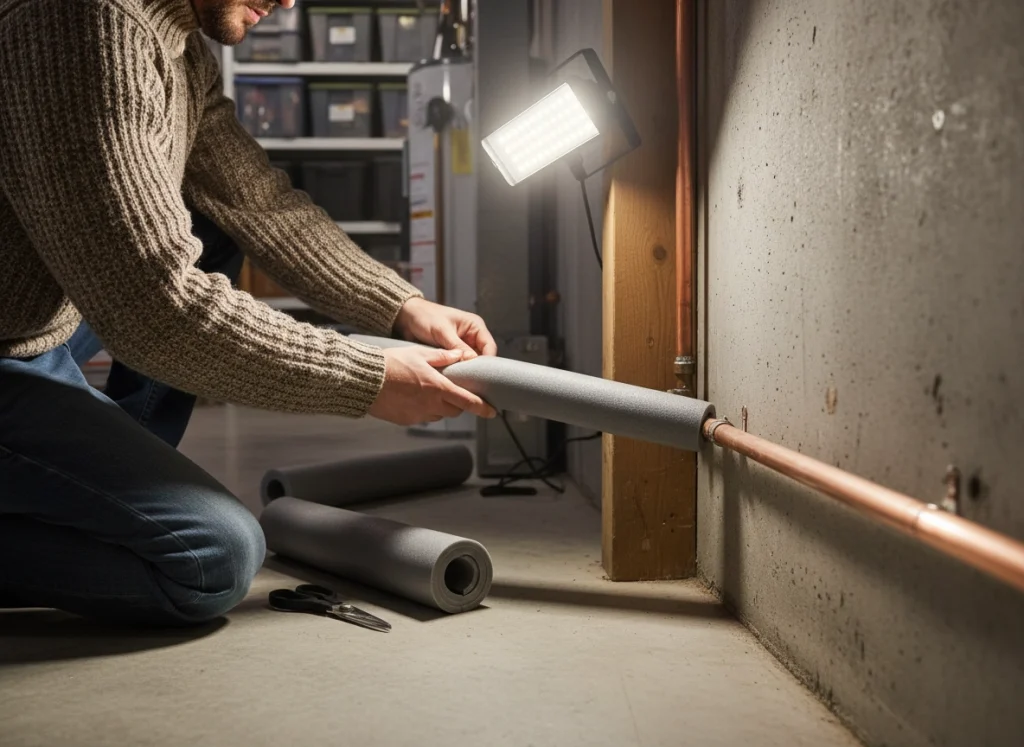When temperatures drop below freezing, one of the biggest worries for homeowners in Bellingham is frozen pipes. Not only can this lead to a loss of water flow, but frozen pipes can burst—causing extensive water damage and costly repairs. Understanding why pipes freeze and how to prevent this phenomenon can save you stress, time, and money during the winter months.

The Science Behind Frozen Pipes
Water expands as it turns to ice. When this happens inside your plumbing system, the expanding ice creates immense pressure within the pipe walls. Even metal pipes, which seem sturdy, can’t always withstand that force. The pipe doesn’t necessarily burst where the ice forms—it often breaks downstream, where the pressure builds up between the blockage and a closed faucet. Once the ice thaws, the resulting leak can release hundreds of gallons of water.
Pipes most at risk are those located in unheated areas like basements, attics, crawl spaces, and garages. Even pipes running through exterior walls or under sinks along outside walls can be vulnerable if not properly insulated.
Tips to Prevent Your Pipes From Freezing
Fortunately, there are several effective ways to keep your pipes safe through winter:
- Insulate exposed pipes. Use foam insulation sleeves or heat tape for pipes in colder areas of your home. This small investment can make a big difference in maintaining consistent temperatures.
- Seal drafts and leaks. Check for gaps where cold air can enter near pipes—especially around vents, electrical wiring, and dryer exhausts. A bit of caulking or insulation can block out freezing air.
- Keep the heat on. If you plan to be away, set your thermostat to at least 55°F. Consistent warmth helps protect interior pipes from freezing.
- Open cabinet doors. When temperatures plunge, open cabinets under sinks (especially those on exterior walls) to allow warmer air to circulate around pipes.
- Let faucets drip. Allowing a slow trickle of water to run keeps pressure from building and helps prevent ice blockages on the coldest days.
- Disconnect outdoor hoses. Drain and store them for winter, and shut off the water supply to outdoor spigots.
How a Professional Plumbing Inspection Can Help
Even with good habits, some risks aren’t visible to the untrained eye. That’s where a professional plumbing inspection can be invaluable. During an inspection, a licensed plumber checks for vulnerable spots—like inadequate insulation, hidden leaks, or aging pipes—that could fail under cold stress. They can also ensure your main shutoff valve works properly, so if a pipe does burst, you can act quickly.
Barron’s WholeHomeTM offers annual inspections, discounted repairs, and priority service. Enrolling in this program provides peace of mind that your plumbing system is ready for freezing temperatures. Professionals can also install preventive solutions such as pipe heating cables or smart leak detectors, giving you extra protection throughout the season.
Stay Warm, Stay Prepared
By taking a few proactive steps and scheduling a plumbing inspection before winter sets in, you can significantly reduce the risk of frozen pipes and costly water damage. Prevention is far easier—and less expensive—than cleanup. Protect your home this year by making pipe care part of your winter maintenance checklist.
Our team of Home Performance Experts has served the I-5 corridor from Blaine to Marysville, Oak Harbor to Concrete, and the San Juan Islands since 1972 with a mission of Improving Lives™. We look forward to serving you too! Contact Barron Plumbing today to join the WholeHomeTM program.
